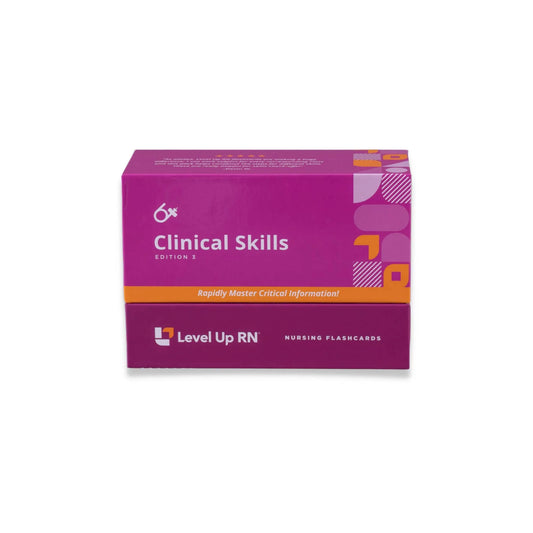In this video and article, Ellis demonstrates insertion and removal of an NG tube along with best practices. This video follows along with our Clinical Skills - Nursing Flashcards.
This lesson is specifically on the physical process of insertion and removal skills during your nursing practice or clinicals. If you need to learn more about NG tubes, check out Nasogastric Tubes - Fundamentals of Nursing.
NG tube insertion
To prepare my patient for a nasogastric tube insertion, elevate the head of the bed. Cover their chest with a towel—you could also give them a basin (e.g., emesis basin) or tissues because insertion can stimulate their gag reflex and they might need to gag or potentially vomit, so you want to make sure you're prepared for those scenarios.
Before starting the procedure, get some tape prepared, because there will be points in this procedure where you need tape and only have one hand available. Assemble your other supplies: lubricant, nasogastric tube, pH strips, a container, and a piston syringe.
Open their NG tube. Estimate the length of tube you'll need by measuring from the tip of the nose, to the earlobe, to the xiphoid process (tip of the sternum). Mark the estimated length with tape or a marker.
Lubricate the tip of the tube to facilitate insertion: open the lubricant, insert the tube, and generously apply some lubrication. Ask your patient to flex their neck up, and insert it into the nare. If you meet extreme resistance, stop, withdraw, and either try again or try the other nare. Don't push past extreme resistance.
Instead of going into the esophagus with the tube, you can encourage your patient to swallow. If they're oriented and capable, you can give them a glass of water, they can take small sips, and you can instruct them to swallow to help ease the tube in. Insert the tube until the pre-estimated length you measured, and secure it to their cheek. If you don't secure it, it could slip back out and then you'd have to start all over again.
NG tube placement confirmation
To confirm placement, you can withdraw gastric secretions (aspirated contents of the tube) using a piston syringe as Ellis demonstrates in the video. Measure the pH of the secretions, it should be under 5. Stomach acid is acidic!
The gold standard for confirming initial placement is with an x-ray. It's important to check that the tube is actually in their stomach and not somewhere incorrect, like a lung!
Once placement is confirmed, the tube can be anchored more securely and attached to suction. Anchoring an NG tube more securely simply means anchoring it to the patient's nose. There are devices that allow you to do this, but as Ellis notes in the video, every facility usually has tape.
You can then attach the remaining lengths to the patient's gown so that it doesn't pull, and then it can be connected to suctioning if indicated.
NG tube removal
Once orders have been given for a patient's NG tube to be removed, you can follow this process to remove it.
Turn off the suction. Depending on the facility, you may need to retest the placement. Some facilities want you to flush the tube before you withdraw it, and if you need to flush the tube, you need to check placement first. So you can use the piston syringe to check the pH again. The NG tube can then be flushed with 30 ml of water or air.
Once flushed, remove the tape or securement device from the patient's nose.
Make sure they have a towel on their chest, because when the tube is pulled out, sometimes mucus and other fluid comes out with it. Instruct your patient to hold their breath, and pull the tube gently, but steadily (quickly, but smoothly). Offer the patient oral care and a tissue to blow their nose.
Best practices for NG tubes
- Do not instill air into an NG tube to check initial placement.
- Do not pull on the tube or insert anything into the air vent.
- Keep the head of the bed elevated.
- Assess nares daily for potential mucosal breakdown.


